Bank holiday breaks in Devon
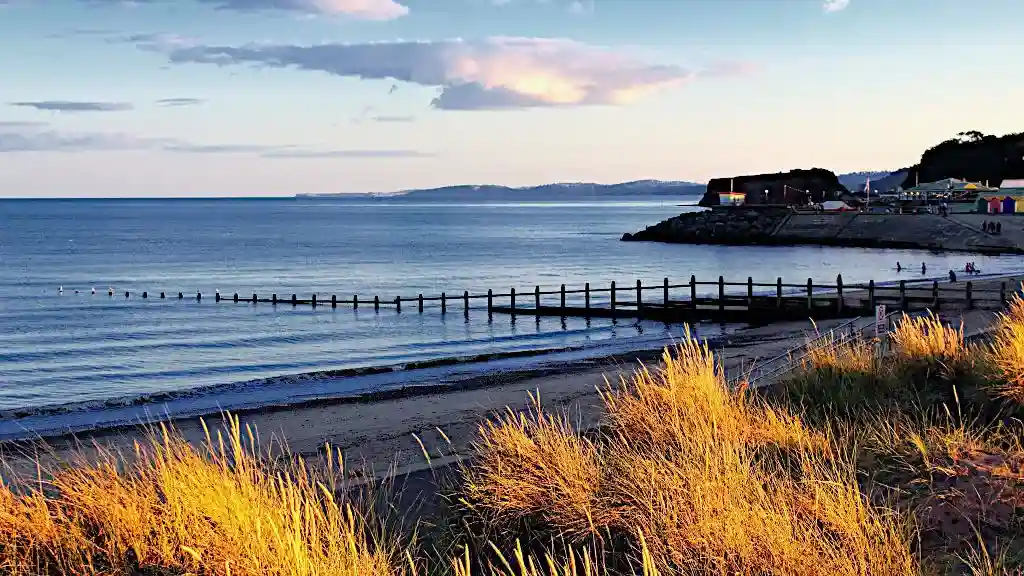
Discover Coast & Countryside
Welcome to Devon (a.k.a. 'England in miniature). Devon has what it takes to be the quintessential British seaside destination, with beautiful beaches like Woolacombe and Torquay. But it is an equally popular place for hilly walks amongst the peace and tranquillity of its high moorland grounds. If you are looking for the perfect Bank Holiday Break - Devon is a great place to start!
Just look at the impressive list of Devon countryside that has officially been designated as beautiful and worthy of protection:
3 Areas of Outstanding Natural Beauty (AONB)
- North Devon coast (171 km², 45 mi²)
- East Devon (268 km², 103 mi²)
- South Devon (337 km², 130 mi²)
World Heritage Sites
- West Devon Mining Landscape
- Jurassic Coast (East Devon)
National Parks
- Dartmoor
- Exmoor
UNESCO global geopark
- English Riviera (104 km² / 40 mi² around Torbay in South Devon)
These are just some of the stunning areas in Devon that are easily accessible for a bank holiday getaway. Whatever your taste - coast, countryside or cliff walks - Devon has something to keep you entertained.
The North Devon Coast
Outstanding natural beauty
Covering a 46-mile stretch along the Bristol Channel to the Cornish border, North Devon offers one of the best coastal weekend breaks in all of the UK.
Sitting on the north end of Exmoor, North Devon has long, sandy beaches and rugged cliffs, wild waterfalls, ravishing valleys and picturesque villages. This stunning stretch of the north coast has all you could wish for! Come here if you want to relax by the sea or follow one of the many coastal paths (on foot or by bike) woven into the landscape.

Tarka Trail
Perfect for a relaxing coastal stroll (or an ambitious but scenic ride on bike) is the Tarka Trail. Mostly flat, with only a couple of challenging climbs, the Trail is a well-maintained and very well sign-posted route around Barnstaple. The 163 miles (261 km) of footpath/cycleway are laid out in loops around the town. The North loop and South loop are of almost identical length (74 miles, 120 km), but you can (of course) take it nice and easy and cycle/walk just bits of it.
South West Coast Path

As the names suggest, the South West Coast Path is a National Trail and winds in and out of the spectacular coastline of Exmoor, Devon, Cornwall and Dorset. The path stretches along England's wild and rugged coastline for 630 miles, all the way from its starting point at Minehead in Somerset on the Bristol Channel to its ending at South Haven Point near Poole. Does it get more adventurous than this?
Planning your trip to the South West Coast Path starts here.
Lynmouth & Lynton
Explore a coastal gem of North Devon
One of the highlights of the North Devon coast lies just 18 miles east of Ilfracombe, with spectacular views up and down the Bristol Channel. The rural village of Lynton sits 500 feet (150 m) on the cliffside, high above its twin Lynmouth village down by the little harbour.
A water-powered funicular railway (Lynton & Lynmouth Cliff Railway) connects both villages since the late 19th century.
What a spectacular way to get from high above to the "blue and boundless sea" 1 below! It's only a short ride, but one could not ask for a more unique and (environmentally friendly) way down to the sea. Well worth a visit!
The Valley of Rocks
"The very bones and skeleton of the Earth"

While you're in the area of Lynton, you should not miss the nearby Valley of Rocks, described as "one of the greatest wonders indeed in the West of England" by romantic poet Robert Southey in the late 18th century.
This out-of-this-world stretch of land is just half a mile west of the village. A coastal path meanders through a "narrow vale between two ridges of hills somewhat steep", with "rock reclining upon rock, stone piled upon stone, a huge and terrific mass."
Even less romantic eyes will have plenty to see. Feast your eyes on the ruggedly beautiful cliffs towering above and the pounding waves and endless ocean below, with wild feral goats grazing quietly in between on the green pastures.
Exmoor and Dartmoor National Parks
Wildlife and Natural Beauty
Dartmoor National Park and Exmoor National Park, two of the most beautiful, wild and extensive areas of the county, can make for some excellent days out, no matter whether it's in pursuit of adventure or tranquillity.
The sea cliffs, moorlands and deep wooded valleys of these unbelievably marvellous places provide you with an awe-inspiring setting for walking, cycling and horse riding.
There's an abundance of trails that have been crafted by both wildlife experts and outdoor enthusiasts over many years. Those looking to be more adventurous will love the tree-surfing, zip-lining and rope-bridge-passing that Dartmoor Park also has to offer.
And you might even come across some of the iconic and semi-wild Dartmoor Ponies...
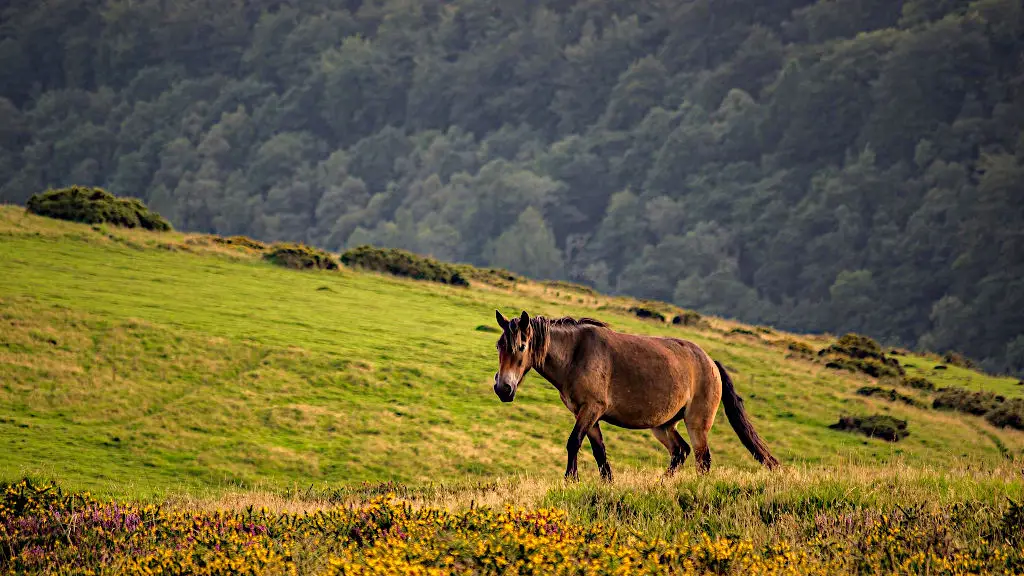
If tranquillity and star-gazing are your bag, you should be as far away as humanly possible from bright city lights polluting the nightly skies. Exmoor Park has remote areas that are so removed from light pollution, you can explore the Milky Way with your bare eyes on a clear night. Best time for a dark sky experience in Exmoor's Dark Sky Reserve: August, October and December.
Woodland Walks in Devon
Between coast and cliff
Without a doubt, Devon has 2 beautiful coastlines on the English Channel (south) and Bristol Channel (north) with striking sea views that are hard to miss. But why stick to the main road when you can get off track and into the woods?
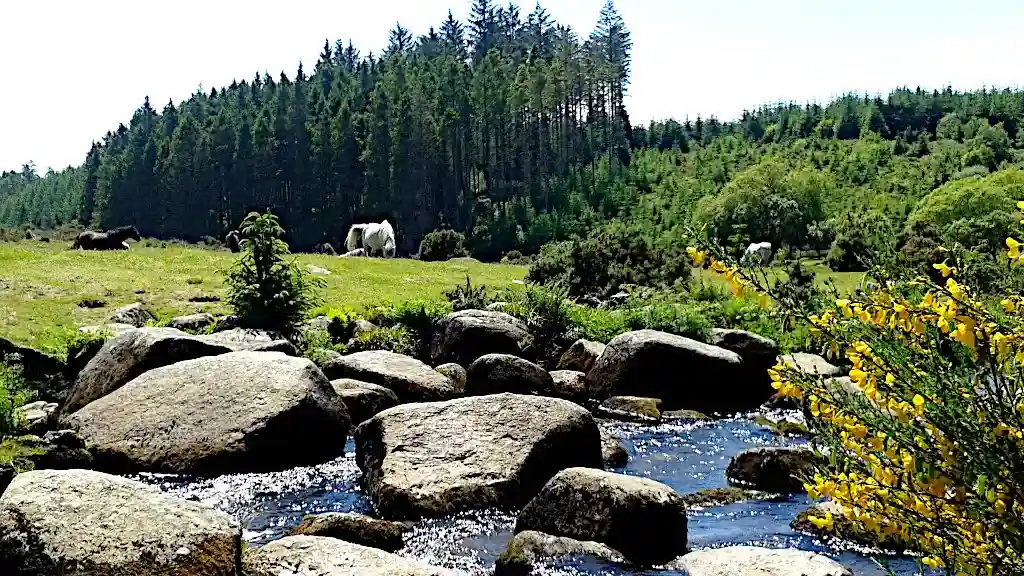
Bellever forest, for example, is located in the heart of Dartmoor near Postbridge and a great place to have a peaceful encounter with wildlife, nature and fir trees. Grab your bike or walking boots, and head out on a pleasant tour along the many trails that wind through the woods. If you're feeling a bit peckish, stop for a picnic on the bank of the East Dart river.
Bronze Age Dartmoor is also present in the forest in the form of typical stone circles, standing stones (menhirs like the famous Loughtor Man), and burial chambers.2
East Devon's stunning Haldon Forest Park is one of Britain's hidden gems and - just like Bellever Forest - steeped in history. Due to its elevated setting, its rocky soils and dense forests, the high grounds of Haldon have always prevented the easy passing of trade and travellers. Haldon Forest Park covers 3.500 acres and is just 15 minutes out of Exeter.
South Devon
Le beach, mon Dieu
South Devon has it all: unspoilt countryside, beautiful beaches and buzzing cities, a rugged coastline, villages hidden amidst a patchwork of farmland, wide views from hilltops, a mild climate and a long history of settlement, agriculture and tranquillity.
It's where the sea meets the land in this stunning corner of England, and it's hard to decide where to go on a May or August Bank Holiday Break in Devon.
UNESCO English Riviera Geopark
The nickname "English Riviera" has stuck to South Devon since Victorian times. It's a well-deserved and affectionate label. Mostly due to its attractive coastline with nice beaches and a warm, maritime climate enabling palm trees to grow, it's easy to see why these parts of the South English coastline were linked to that of the famous and fashionable French coast.
The area around Torbay (29 km / 18 miles from Exeter) in South Devon features the UNESCO English Riviera Geopark.
This Geopark stands out due to its concentration of geological marvels and natural beauty. Thanks to its rich heritage, anyone interested in fossils, caves, marine life and climate history, should visit.
If you are into history, then a trip to Torre Abbey will take you way back to the late 12th century. Soak up the historic atmosphere while you stroll through the 18 acres of lovingly crafted and well-maintained gardens. Visit the Abbey and permanent art collection or sit on one of the many benches and soak up the splendid view of the abbey buildings and wide green lawns overlooking the seafront.
Read more about Torre Abbey in Torbay
South Devon beaches

From Brixham in the east to Plymouth in the west, South Devon's mellow coastline is dotted with more than 50 sandy beaches and secluded coves.
Many of the beaches carry the Blue Flag as a sign of high and stringent environmental and safety standards. Many of them are accessible, disabled friendly and have lifeguards on duty.
Among the 2022 Blue Flag beaches are:
- Exmouth beach and Dawlish Warren, situated on either side of the vast River Exe estuary
- Teignmouth, a family-friendly beach with an impressive pier
- A staggering number of beaches around Tor Bay: Oddicombe and Meadfoot Beach, Torre Abbey Sands, Preston Sands, Broadsands, Breakwater Beach
- Further south, there's quiet Blackpool Sands with its clean, shingle beach, clear water and great backdrop (kayaks and other water sports equipment for hire, too)
Seaside resorts in South Devon
While North Devon is a haven for rock-pooling, swimming, and surfing and offers dramatic coastlines, rugged moors and green valleys, the seaside resorts along the South Devon coast are a bit more "genteel" but not less picturesque.
Devon's traditional British seaside resorts such as Torquay, Paignton and Brixham are excellent spots to spend a Bank Holiday Weekend break, and there is enough tourist infrastructure as well as accommodation in place.
Torquay
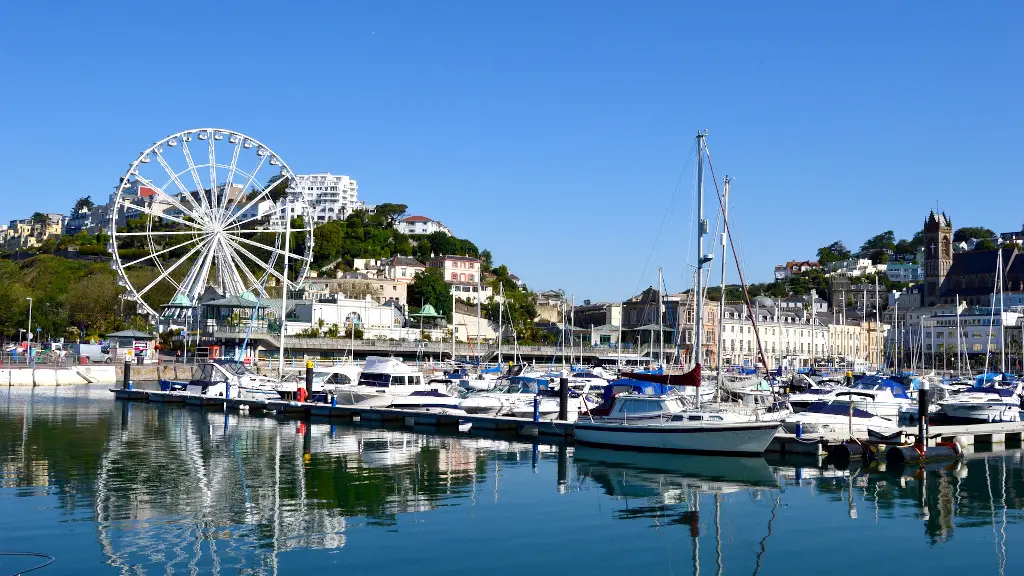
You might remember the episode of Fawlty Towers, where John Cleese plays the manager/owner of a Torquay hotel. "That is Torquay, Madam," he exclaims, pointing out the beautiful view of Torquay to a fussy and fault-finding hotel guest. "That is not good enough," she replies... Well, of course, it's good enough!
A lively and lovely seaside town, genteel Torquay is famous for many things: Fawlty Towers, Agatha Christie (it's her birthplace), the aforementioned Geopark, but also for its nearby beaches (Babbacombe) and cliffside (Oddicombe).
Kents Caverns, a prehistoric labyrinth of caves, can be visited to learn more about how our ancestors lived and died during Stone Age and Ice Age (and also what the difference is between a stalactite and a stalagmite). Book ahead for a tour and allow for 2-3 hours. Remember to bring a jacket with you.
More info on the caverns.
Paignton
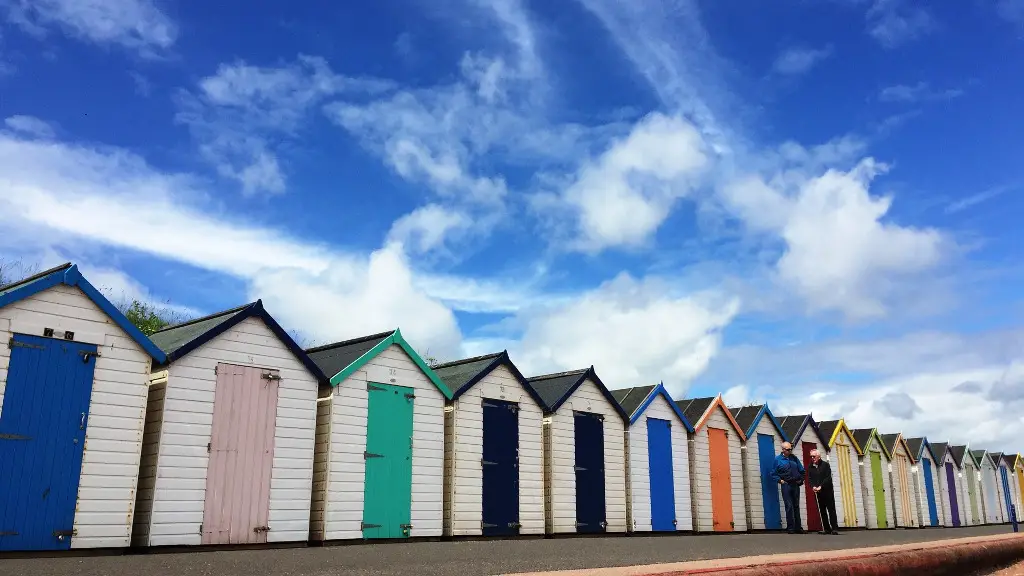
Paignton is another traditional seaside resort that shares Tor Bay with neighbouring Torquay. The wide, sandy beach gleams with a distinctive sandstone colour, inviting visitors for a swim or a paddle or a nice walk (which is even nicer when the tide is out). A 240 m long pier offers a delightful view of Tor Bay, fish and chips shops if you're hungry and good fun all along the pier (amusement park and arcades).
If you're on a family staycation, you should take the kids to the spacious and a bit hilly Paignton Zoo Environmental Park for a day out. Of course, there are plenty of animals to see (and to feed) and lots of picnic benches for the weary and hungry travellers themselves.
Just around the corner, Roundham Head (a rock formation projecting out into the bay) offers impressive cliff-top walks and stunning views of the bay from Torquay in the north to Brixham in the south.
A little further south, Goodrington Beach displays an enjoyable long stretch of sandy beach, interspersed with some lovely rock pools. You can rent one of the colourful holiday beach huts and spend the day on the beach, watching the sea and the old steam train which regularly passes by just behind the beach huts.
Babbacombe
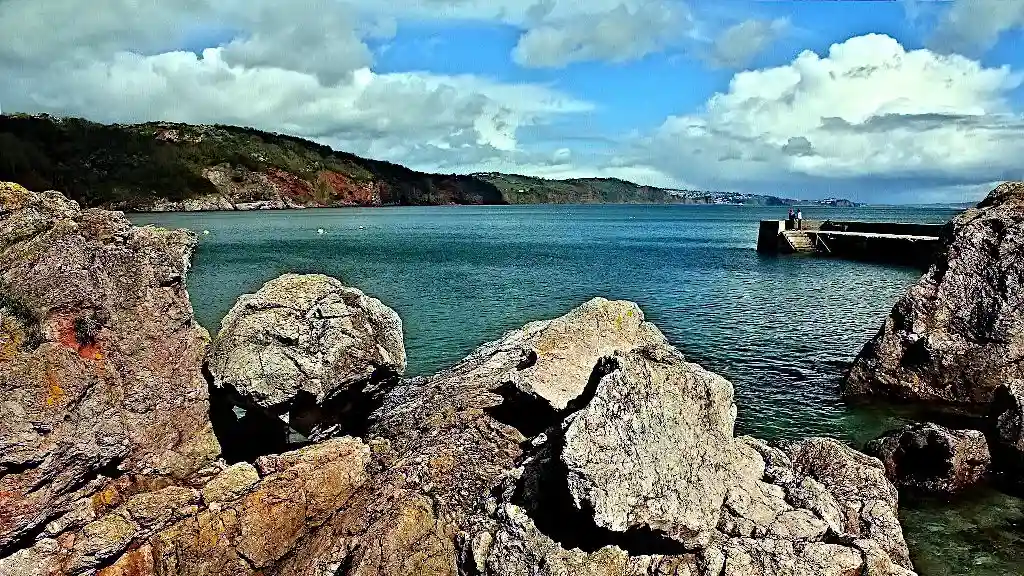
Babbacombe is a pretty laid-back village just north of Torquay.
Babbacombe is considered a hidden gem on the South Devon coast, where every house has a fantastic sea view. There are quite a few places to eat and drink, for shopping (High Street) and lovely walks along the cliffs.
At the bottom of the hill is a quiet cove with beautiful reddish sand and calm waters that are perfect for swimming. From Babbacombe, which is high up on the cliff, you can take the famous Babbacombe Cliff Railway which goes down to the foot of the cliffs to Oddicombe Beach (approx. 219 m). A path leads southeast to Babbacombe Beach. This is the recommended access to Babbacombe Beach — you can also drive down by car, but the car park right next to the beach café is rather small and the Beach Road leading down to sea level is rather steep...
For a family day out, the Babbacombe Model Village is just right. With tens of thousands of miniature people, miniature buildings and hundreds of houses and scenes from all over Britain, such as Bath Crescent or Shakespeare's dwellings, you will feel like Gulliver on his travels. The same advice is valid here: take your time, at least 2-3 hours.
Read more about the charming Model Village.
Brixham

Brixham is a delightful town in South Devon, perfect for a detour on the way from Torbay or Cornwall. Brixham is known for its historic harbour and is one of the busiest fishing ports in the UK. The seaside town is primarily a working-class town, with a history dating back to the Saxon times or even further.
Travel to Devon
If you are planning a trip to Devon, you should know how to get there
Airports
Exeter Airport (EXT) enables links to popular Mediterranean destinations via charter flights and a more exotic destination (Lapland). National airports are also connected to Exeter with flights from/to Aberdeen, Glasgow, Edinburgh, Newcastle (Scotland), Belfast, Dublin (Ireland) and the Channel Islands (Guernsey, Jersey and Isle of Scilly)
Rail
Devon is well connected to the main British rail lines starting from Paddington or Waterloo Station (London). Many of the most scenic routes run through Devon, so travelling by train is an attractive option. Devon's main train stations include Tiverton, Exeter St. Davids, Newton Abbot and Totnes.
Check out South Western Railway and Great Western Railway for bargain deals and ticket info.
Devon: Weather and climate
2021 average temperatures
Devon has a mild climate, owing to its southerly location and the fact that it is surrounded by a moderately warm sea. There is sunshine and rainfall to varying degrees across the year and the season, but also depending on proximity to the coast and altitude. Coastal regions are directly influenced by sea temperature, so February is the coldest month, while July and August sunshine makes these months the best times to visit.
| Temp | J | F | M | A | M | J | J | A | S | O | N | D |
|---|---|---|---|---|---|---|---|---|---|---|---|---|
| Max | 11 | 12 | 17 | 14 | 18 | 21 | 27 | 21 | 24 | 18 | 14 | 13 |
| Min | 0 | -1 | 1 | 1 | 4 | 8 | 11 | 11 | 10 | 8 | 2 | 3 |